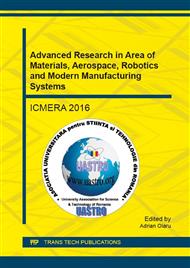p.183
p.188
p.194
p.204
p.210
p.219
p.225
p.231
p.236
An Idea of Computer Aided Eye Exercises System Based on Bates Method
Abstract:
Vision is one of the most important senses. As a result of different medical conditions and of changes occurring with age, vision may be disturbed or even disappear completely. In many situations ophthalmologists prescribe glasses. However, there are other methods that can provide not compensation of the visual deficits, but visual rehabilitation, providing maintenance and improvement of the quality of eyesight. These include among others, the Bates method. This method is based on the assumption that vision exercises can keep the eye muscles in good shape and maintain appropriate nutritive and oxygen supply to the eye, making possible vision without eye glasses. The paper presents an application that supports the implementation of the sight exercises by Bates concept and the results of a preliminary study applying this method.
Info:
Periodical:
Pages:
225-230
Citation:
Online since:
December 2016
Authors:
Price:
Сopyright:
© 2017 Trans Tech Publications Ltd. All Rights Reserved
Share:
Citation:


